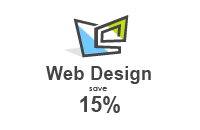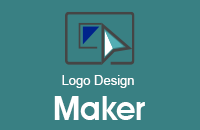Why Every E-commerce Business Should Reconsider the Design of Their Product Pages
March 24th, 2021

At the heart of the e-commerce industry is product pages. You can’t make sales without a strong online representation of what you’re offering. You’ve probably visited Amazon.com and Walmart.com hundreds of times and are familiar with their web design layouts. However, there are a lot of additional things you can focus on for your pages to remain as competitive as possible.
Gartner took a look at how the pandemic shifted more businesses to a digital model. Researchers confirmed that societal changes propelled digital commerce to become the number one customer buying channel. They advise all industries to look to online technologies to adapt to changes and remain competitive.
Knowing you should have an online presence doesn’t mean just slapping a website in place. You must drive down into each element of your product pages and make them the best they can be. Here are the top things to improve.
1. Offer a Consistent Experience
Do you want customers to trust you? You must present a consistent experience no matter where the client encounters your brand. If they come into a brick-and-mortar store, they should get the same feel as when they land on your website.
Some ways you can offer a consistent experience on your product pages include:
-
Use a standard layout so each page looks similar.
-
Keep overall branding consistent, such as the logo and company color palette.
-
Create an overall website design that is appealing to your customers
-
Make sure the language matches the personality of your brand. Go informal or formal, but remain consistent.
Know who you are as a brand, so you don’t inadvertently sway outside your known graphic design identity. Customers want to see you offer the same level of service each time they buy from you.
2. Improve Delivery Methods
You may be new to the e-commerce game or an old pro. Either way, you can always improve delivery methods and stay a step ahead of the competition.
Around 80% of customers want same-day shipping options. The faster you can get your products in the hands of customers, the more likely it is they'll buy from you again.
Most people tie their overall experience with your brand to delivery. Once you figure out how to consistently deliver faster, include the anticipated length of time on your product pages and explain your methods.
3. Customize for Your Audience
The number of things competing for attention from consumers is massive. People have families, social media, video streaming, television, radio and a million other things competing for attention. If you want to keep visitors on your pages, you must engage them on their level.
People don’t want just another cookie-cutter approach. They want to feel like you see them and value them as an individual. There are a few things you can do to accomplish this on your site:
-
Remove any clutter that doesn’t pertain to explaining the product.
-
Know your audience. Create buyer personas and speak to them with your language, images, and graphic design layout.
-
Conduct split testing to see what language each person and group responds best to.
-
Add cookies and address people by name or suggest other items based on their browsing history.
Look for ways to create a unique experience for your target audience. They’ll be much more likely to move forward in the sales funnel if they feel they aren’t just another number landing on your page.
4. Revamp Your CTA
You can also use your buyer personas to create CTAs that speak directly to your audience. One survey showed that personalized CTAs were viewed 42% more than generic ones.
Keep the language short and to the point. Think about the action you want the user to take. What is the goal of the page? Do you want them to add the product to a cart or learn more? Use the language that most clearly defines your objective.
Try different design, placement, colors, and even button sizes. A/B test every change until you hit the conversion rate you’d like.
5. Add Trust Factors
People have no reason to trust your business. They don’t know you and likely have never even heard of you before conducting a search for a solution to their problem.
It’s your job to convince them you are reliable. They need to know you’ll deliver the product as promised and be there if something goes wrong. Some trust factors to help them believe this are:
-
Include contact information. Make sure they know how to get in touch.
-
Show what organizations you belong to, especially professional ones.
-
Establish yourself as an authority with quality content.
-
Include reviews and testimonials to show other people’s experiences with your brand.
Think about what makes you willing to give a new business a try. What can you include that shows you’re worth taking a chance on?
6. Optimize for Mobile
Today, more than 80% of consumers use their cell phones to watch videos online. If your product pages don’t scale to size for smaller screens, you risk losing a lot of traffic.
Test everything thoroughly. Do website design and images scale correctly? Is the text readable? Look for any issues with filling in information for checkout. Can you offer an easier way to complete the process, such as using Facebook info?
Pick up an actual smartphone and test the site to see how everything works. Don’t just trust a browser viewer you look at on your desktop computer.
Ask for Feedback
Once you have everything laid out the way you like, go ahead and ask your customers what they think about your design. Find out if anything was difficult to navigate or if they needed additional information to make a decision.
Look at customer service and live chat information to see which questions customers ask most often. Can you answer those upfront to prevent losing anyone due to lack of information? Seek to improve your product pages design over time, and you’ll see your conversion rates slowly tick upward.
About the Author:

Eleanor Hecks | Editor-in-Chief |designerly.com
Eleanor Hecks is editor-in-chief at Designerly Magazine. She was the director at a marketing agency before becoming a freelance web designer. Eleanor lives in Philadelphia with her husband and dog, Bear.




